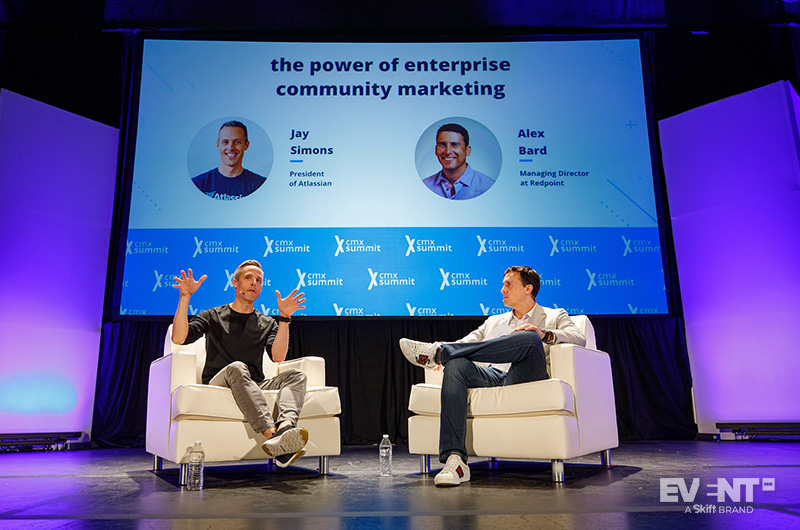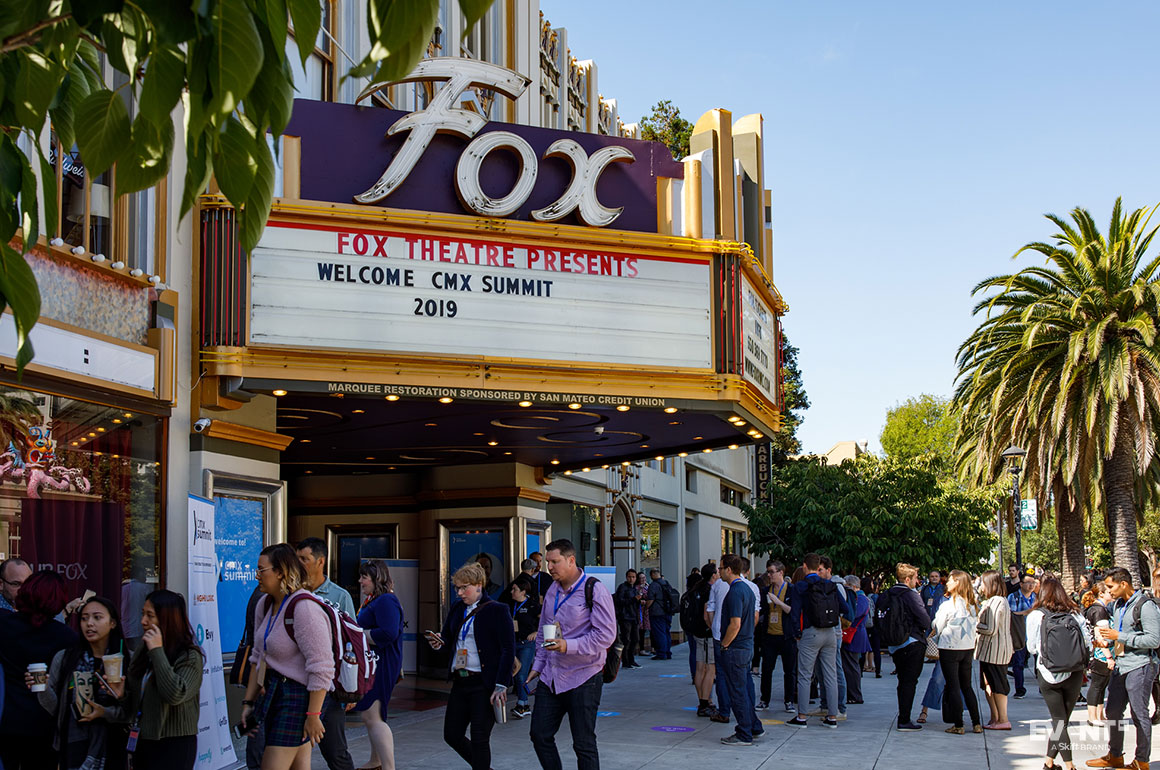Skift Take
Multi-hub events may seem like the obvious solution as ongoing restrictions, uncertainty, and sustainability concerns force us to consider smaller, more local events. But the added cost and logistics make scaling the strategy a daunting prospect. Could community-run events be the answer?
As the American economy begins to amble towards recovery, event planners keen to bring attendees back onsite will have to face uncertainties and restrictions in many areas that keep things small and local in the near term.
This has led many to consider multi-hub hybrid events that involve smaller live components in disparate destinations linked together through a common brand, theme, and digital layer.
In many ways, however, this can be tantamount to planning multiple different events. The logistical challenges are compounded by the material costs of sourcing multiple venues, vendors and suppliers — exacerbating budgets already stretched by labor shortages and increasing onsite costs.
These concerns make for a tough decision to take a multi-hub approach in the first place. What happens when you need to scale up?
For corporate and enterprise events, at least, the solution might be in their approach to community management. To find out more, EventMB sat down with Derek Andersen, co-founder and CEO of community-driven events platform Bevy and startup community Startup Grind.
The Case for Building an Event Community
According to Andersen, the rise in community-oriented marketing comes from a declining appetite for transactional experiences combined with an increased need for a sense of belonging. “There’s a loneliness epidemic that’s crazier than it’s ever been,” says Andersen.
For Andersen, adding a layer of community to a business event is about improving the experience and the social stakes of being there, of being included.
“When events feel like I’m part of a community,” Andersen contends, “I’m much more likely to talk about them. I’m much more likely to attend the entire event, much more likely to come back.”
“We’ve all been in good and bad event experiences, but the ones that feel like community, like Dreamforce or Google IO, create a sense of belonging that is much greater than just learning about new tech.”
– Derek Andersen, Co-Founder and CEO, Bevy / Startup Grind
This community engagement is both more achievable on a smaller, regional scale and (at least according to the premise of platforms like Bevy) a powerful social motivator for enthusiastic customers to engage with your brand activations.
The Cost Argument: The Win-Win Nature of Customer Volunteers
Generating a sense of community is also about fostering a disposition in your audience to perpetuate your brand engagement themselves, generating what some marketers might call ‘brand advocates’ or ‘brand ambassadors.’
Essentially, it’s taking the ‘word of mouth’ concept and amplifying it through formal channels that you ostensibly control. What Bevy seeks to do is provide brands with event channels that let trusted community members step into the role of event planners on a company’s behalf.
For Andersen, this is the solution to the added labor and logistical challenges of a multi-hub event program at scale.
“If small and local [events] are going to come back first, the question is how [to do them] at scale — how to manage that across hundreds of cities and hundreds of events per month. The only way to do that is to get your community involved, to help you and to be part of it.”
– Derek Andersen, Co-Founder and CEO, Bevy / Startup Grind
In July alone, Startup Grind will have run 385 events “with a full-time team of three people” running them. This is possible thanks to 2000 customers that effectively serve as volunteer “chapter directors” who create and run the events themselves using the Bevy platform.
“This only works because there is a mutual value proposition where everyone can win. Local organizers get a brand, a platform, and a team to work with. I know dozens of stories of organizers whose lives have been totally transformed by becoming a Startup Grind Director. There’s a win-win for professionals and brands to work together to build each other up.”
– Derek Andersen, Co-Founder and CEO, Bevy / Startup Grind
Who Enforces Brand And Content Standards?
It’s hard to imagine a team of three full-time staffers approving the content and brand compliance for 385 events. Who is in control of how the brand is represented? Who approves the events?
“We don’t have to approve every single event,” says Andersen, “because of our process for vetting people to match our values and mission.” Basically, protecting your brand involves vetting the volunteer organizers and creating a functional hierarchy of surveillance to ensure that events don’t stray from the brand’s standards.
“Once they come into the system,” Andersen continues, “they can only create certain types of approved events that fit [a company’s] brand and guidelines.”
In other words, the technology facilitating and joining events in disparate locations should also do some heavy lifting when it comes to controlling the community and enforcing some consistency in the format and branding.

Customers Will Talk About You Anyway—Why Not Collect the Data?
There may be a solid cost-savings business case for “empowering users to run events on your behalf but under your purview,” as Andersen puts it, but there are also more fundamental forces at work: people talk.
“The micro trend here that goes way beyond the event industry is that users are now in control,” says Andersen. “Whether it’s a Yelp review for small business or a G2 crowd for enterprise software, people are going to find out who you really are and what you’re really about.”
At the end of the day, big corporate brands with enough customers are going to have communities that want to network, share knowledge, and talk about the brand — with or without your corporate oversight. There is an argument for creating a formal channel for those communities that gives the brand ownership of the conversations, format, data, and revenue opportunities.
“And because they’re run by customers, the experience is much more authentic,” says Andersen, who cautions against undermining the community sentiment at the core of the free publicity by using the data for direct sales opportunities.
“Salesforce owns all the data for their 500 events a month, but if you [put] all of your user data into a lead funnel and try to sell the crap out of it, people will find out and probably won’t want to be a part of it.”
– Derek Andersen, Co-Founder and CEO, Bevy / Startup Grind
The attendee experience should be at the heart of the event, says Andersen: “Rather than [collecting user data] and trying to exploit it at every opportunity, [the goal is] to educate and build belonging for the users.”
Does This Strategy Make Sense for All Business Events?
Bevy targets enterprise corporate clients, and the use case is quite clear for corporate brands supplementing user conferences that may be less practicable post-pandemic. It’s also not hard to see the potential for larger associations that are already accustomed to regional chapters. (Although there is already a long-standing precedent for chapter management in the association sector. In some ways, this community-driven event principle is that association chapter model applied to the corporate world.)
But how easily does this translate for other types of large-scale events like trade shows, which have had difficulty benefiting from the alternatives and new business models developed during the pandemic?
The whole value proposition of a trade show hinges on its exclusive ability to bring together two factions of participants: exhibitors and (ideally) qualified, purchase-ready buyers — often from around the world. Sure, trade shows are transactional… but isn’t that kind of the point?
Would an exhibitor prefer to engage with local buyers throughout the year via the trade show organizers’ platform rather than gathering leads and following-up independently through its own marketing channels? Would attendees be amenable to that, or do they like trade shows precisely because they can make significant progress on sorting out their annual budgets and partnerships in a condensed, highly transactional week?
Moreover, the economizing principle behind letting your users scale your event program rests on the practically free labor of volunteers. In the case of Startup Grind, the incentive is that “community leaders can use Startup Grind’s brand to help them grow their business and their own platforms wherever they live,” says Andersen.
But trade shows are high-level logistical challenges with many stakeholders and a million moving parts. Unless you’re dealing with a trade show like IMEX wherein one half of the equation are themselves professional event planners, it isn’t clear who the customers-cum-planners would be. The exhibitors? The attendees? Which faction of that community is supposed to step up to scale the multi-hub model for a trade show?
And even if you could find someone to do that in their region out of their sheer enthusiasm for the show, what would be the incentive to do that in the service of another brand?
On the face of it, the advent of company-controlled-but-customer-driven events could serve as more of a disincentive for exhibiting companies to participate in large trade shows than a useful way to supplement them as things go small and local.
IN CONCLUSION
With international travel an ongoing uncertainty and sustainability concerns impacting the disposition to travel in the long term, large annual (and especially international) events are likely to face a shift toward smaller, regional events.
Fortunately, the collective groan on the part of event planners tasked with a multiplied workload (unlikely to be matched by a proportionately multiplied budget) may be at least somewhat eased for corporate event teams through community management. In exchange for some of the oversight, ubiquitous corporate brands like Salesforce and Google can theoretically achieve an almost limitless scale of essentially free brand engagement through volunteer-run events.
“People now have customers in every corner of the world. Is everyone going to come to Dreamforce? Well, no, they can’t. Given the pandemic-related vaccine and border issues, even less so now than before. That’s where Trailblazers come in and supplement what Dreamforce does with monthly events that are done locally in hundreds (maybe eventually thousands) of cities.”
– Derek Andersen, Co-Founder and CEO, Bevy / Startup Grind
It definitely presents a compelling case for enterprise brands that have droves of enthusiastic advocates, but the application for business events with goals beyond their own brand recognition may require some teasing out.





